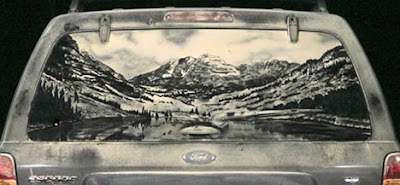When I first saw this picture I just couldn't believe it was made entirely out of legos, or small plastic building blocks that children play with. The planning and design aspect is enormous, because the artist had to have carefully planned out were each piece had to go before he built it. And also, make sure that it looked symmetrical, as shown by the yellow man ripping himself open to reveal what he's made of: legos.

In fact, Nathan Sawaya, the artist responsible for these lego creations has an exhibit of lego people shown in yellow, blue, and red. I think it is really spectacular to see the amount of emotion in these "brick people", and how not any of the lego sculptures are fully constructed. By leaving parts out it seems to me he is saying that all people can fall apart.
I also found this lego video for fun: http://www.youtube.com/watch?v=hmWWfnKVbYY












































